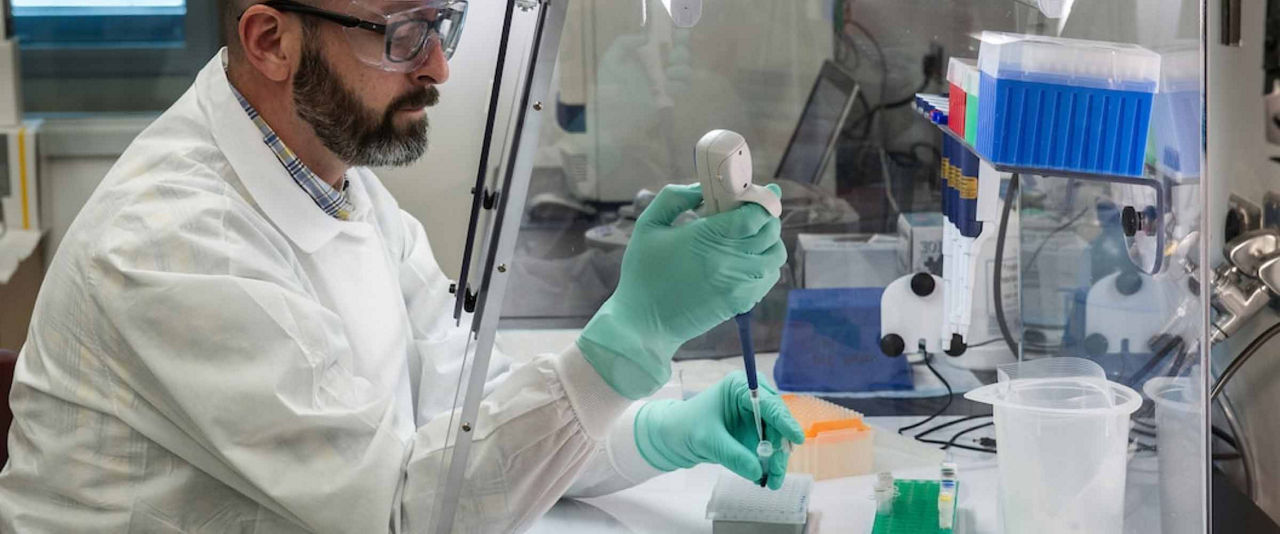 Despite extensive global research activities and recent breakthroughs in therapeutics targeting the immune system in cancer patients, the clinical response to treatment can be transient or incomplete. This is due to the ability of cancer cells to adapt to environmental stress, including therapeutic insult, which contributes to tumor evolution and drug resistance. Hence a vast majority of tumor diseases remain difficult to treat and substantial, long-lasting treatment responses remain a major challenge1.
Despite extensive global research activities and recent breakthroughs in therapeutics targeting the immune system in cancer patients, the clinical response to treatment can be transient or incomplete. This is due to the ability of cancer cells to adapt to environmental stress, including therapeutic insult, which contributes to tumor evolution and drug resistance. Hence a vast majority of tumor diseases remain difficult to treat and substantial, long-lasting treatment responses remain a major challenge1. Increasing literature reports indicate that subsets of cancer cells engage specific adaptation programs that confer them with drug-tolerant phenotypes, also known as drug-tolerant persister (DTP) cells. Extensive studies (with more than 25,000 publications as of August 2021 on Pubmed) indicate that these cancer cells provide a pool to establish stable resistance against therapeutics and are commonly referred to as minimal residual disease (MRD). Altogether, the literature suggests that eradicating MRD before stable resistance is acquired would overcome resistance to current cancer therapies and combining various therapeutic agents and modalities may offer new promising therapeutic avenues2,3.
Given that the development of new oncotherapies is often laborious and is affected by high attrition rates, the repurposing of existing de-risked compounds offers a fast track for the clinical implementation of novel and high-order drug combinations4. However, a deeper understanding of the mechanisms underlying drug resistance is essential before novel combinations can be rationally designed. In order to establish the underlying cancer pathophysiology, recent characterization of the intratumoral cellular composition of cancer patients with MRD utilizing single-cell approaches has identified the co-emergence of four very distinct drug-tolerant states following exposure of proto-oncogene B-Raf (BRAF) mutant melanoma to MAPK-targeted therapy5. In particular, cancer stem cell features such as those present in two de-differentiated, neural crest stem-like cell (NCSC) and undifferentiated/mesenchymal cell states are considered particularly important drivers of tumor recurrence. Unfortunately, there are currently no clinically compatible approaches known to efficiently cotarget these two distinct cell populations4,6.
Modeling Minimal Residual Disease (MRD) in the huNOG-EXL Mice Implanted with a Patient-Derived Xenograft Tumor
Novel preclinical model systems may present one approach to solving the issues mentioned above. There has been a resurgence in the use of patient-derived model systems in recent years, for example, in the field of in vivo humanized mouse models with patient-derived xenografts (PDXs). These humanized mouse models with PDX are increasingly utilized to uncover novel therapeutic regimens for patients demonstrating resistance to current cancer and immuno-oncology treatments. New research conducted in humanized PDX models that were placed under suboptimal conditions demonstrated that the integrated stress response (ISR) promotes survival of cancer cells and tumorigenesis by dampening cytosolic translation due to the underlying mechanisms of mitochondrial bioenergetics, biosynthesis, and signaling. ISR is an adaptive translation program triggered by several intracellular and extracellular stressors in a common pathway that can contrastingly lead to either quiescence or apoptosis, depending on the level of activation. Interestingly, specific antibiotics, such as tetracyclines, can be repurposed to inhibit mitochondrial protein synthesis7,8. Accordingly, multiple recent studies have demonstrated that mitochondrial biology is potentially a promising new area for cancer therapy9,10.To investigate whether the antibiotic treatment negatively impacted the response to immune checkpoint inhibitors (ICIs), PDX (Mel-006) was engrafted in Taconic Biosciences' huNOG-EXL mice and upon reaching 100 mm3, were treated with either anti-PD-1 alone or in combination with tigecycline (50 mg/kg). Treatment with tigecycline did not overtly ameliorate, nor impair, the response to anti-PD-1, which were consistent with findings in YUMMER allografts. Together, these findings indicate that monotreatment with tetracycline is sufficient to significantly delay progression of melanoma lesions that are insensitive to targeted and immune therapies in vivo, although it does not sensitize to ICI11.
















.jpg)

.jpg)
.jpg)
.jpg)
.jpg)





.jpg)


.jpg)
.jpg)




.jpg)




.jpg)

.jpg)



